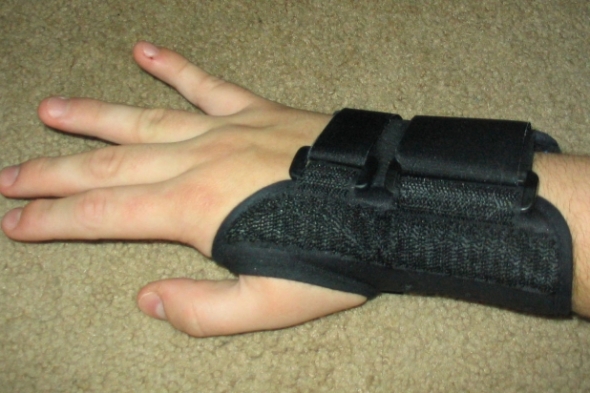According to the medical dictionary, Repetitive Stress Injury (RSI) is defined as an injury that occurs as a result of over or improper use. According to the U.S. Bureau of Labor Statistics, nearly two-thirds of all occupational illnesses reported were caused by exposure to repeated trauma to workers' upper body (the wrist, elbow or shoulder). While one common example of such an injury is carpal tunnel syndrome, in the workers' compensation area RSI can also be claimed for shoulder, and back injuries. According to the Occupational Safety and Health Administration (OSHA), repetitive strain injuries are the nation's most common and costly occupational health problem, affecting hundreds of thousands of American workers and costing more than $20 billion a year in workers' compensation costs.
In the past, if an injury didn't result from an accident, there was no workers' compensation claim. Those days are gone and now it is understood that cumulative trauma injuries and occupational injuries that develop over time are eligible for workers' compensation. Even if an injury cannot be tied to a single event, workers' compensation benefits can be claimed.
According to the January 2012 joint publication by WCIR and IAIABC, every state allows workers' compensation claims for cumulative trauma with the following limited exceptions:
Arkansas — limited to rapid repetitive motion for back or neck and hearing
Hawaii — not in the statue but handling like any other claim
Louisiana — only when considered an occupational disease
Tennessee — with limits to carpal tunnel only if it is arising out of the scope of employment
Virginia — only cumulative hearing loss and carpal tunnel are covered as "ordinary diseases of life" and subject to higher "clear and convincing" evidentiary standards as opposed to the "preponderance of the evidence."
This widespread acceptance of RSI claims is becoming traumatic in in itself for employers, especially when one considers the requirements by CMS that were established to protect Medicare from future medical expenses for workers' compensation and general liability claims. With these new mandatory requirements that all workers' compensation and general liability claims be reported in electronic format, CMS has the mechanism to look back and identify workers' compensation-related medical care payments made by Medicare. When CMS/Medicare learns (and they will) that it has been paying for workers' compensation-related medical care it will seek repayment. The insured or employer could pay the future medical cost twice; once to the claimant at settlement and later when Medicare seeks reimbursement of the medical care they paid on behalf of the claimant, i.e. the cumulative effect.
Let's focus on a key state, California, where this has become a pressing issue. Under California Labor Code Section 5412, the date of injury in cases of occupational diseases or cumulative injuries is that date upon which the employee first suffered disability therefrom and either knew, or in the exercise of reasonable diligence should have known, that such disability was caused by his present or prior employment.
The wording of this statute is proving to be very problematic for employers, as there is no clear-cut timeframe to hold an injured worker accountable to report said injuries. Even more so since cumulative trauma disorders are difficult to diagnose and treat and causation plays an important factor in determining AOE/COE. The magic bullet would be to determine if the injury is AOE/COE or to be able to age the injury. One of the only tools that has been proven effective is the Electrodiagnostic Function Assessment. The EFA is the only FDA-registered device that can age and diagnose this type of injury and its definitive registration allows the monitoring of the necessary frequency response that characterizes a repetitive stress injury. Additionally, it is the only device of its kind that has changed the face of RSI litigation.*
* U.S. District Court, 980 F. Supp, 640, 64-48 (E.D.N.Y., 1997): Geressy v. Digital Equipment Corporation. The EFA changed the face of repetitive stress injury litigation when Judge Weinstein overturned what, at that time, was the largest product liability verdict ever for RSI because of the EFA.





